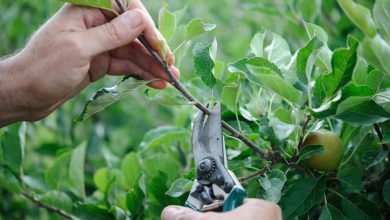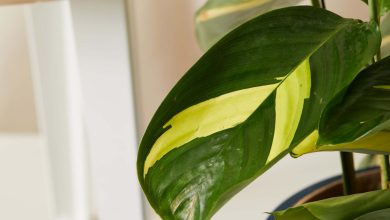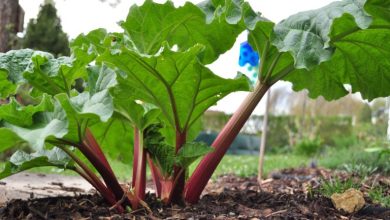How to Plant Wisteria or Glycinia in your Garden: [Complete Guide]
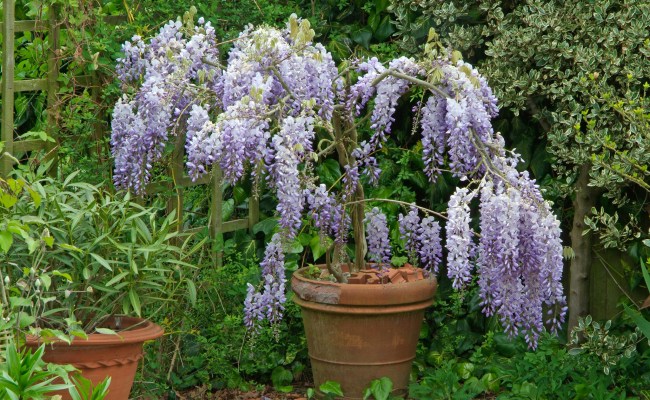
Wisteria (Wisteria sinensis)it is a shrub native to China; however, under the right conditions it can occur in other parts of the world.
It is also known by the name of Wisteria.
It can function as a climbing plant (such as bougainvillea) reaching between20 and 30 meters high.It can also behave like a tree by forming a waxy and flattened trunk.
It is also used in many gardens, so it can be considered an ornamental plant and can havea lovely purple colorlike lavender.
Important Points when Planting Wisteria:
- When? In autumn (it can also be done in spring).
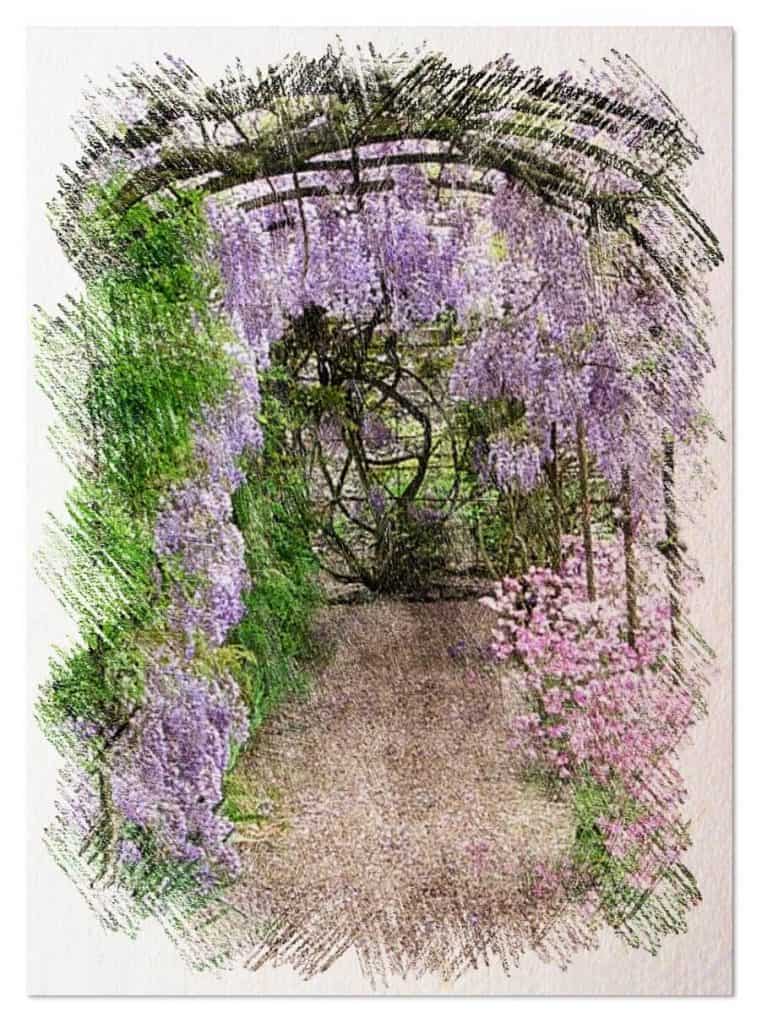
- Where? It is important that you keep in mind that it has a toxic substance for the human body. It is cold hardy, tolerating both partial shade and direct light.
- Growing time? It grows fast, however it takes many years to flower (if done from seed).
- How do we prepare the land? You can opt for a well-draining soil such as sandy loam. If you do not have this type of soil, you can loosen the soil and mix it with substrate.
- How do we water? ideal with drip.
- How often do we water? It needs moist soil. It is advisable to water regularly, at least until the wisteria or wisteria has become large enough.
- How to sow? It can be done by seed, or by cutting (recommended option).
- Plagues and diseases? Japanese beetle.
- Tips and recommendations? Prune annually, water frequently (without flooding). Be careful planting it near other trees, because it can grow excessively and consume resources such as light and nutrients easily.
Wisteria leaves are bright green and pinnate in shape. They can grow to around 20 cm long. Each sheet has 7 to 13 folios that measure approximately 2 to 6 cm in length.
The flowers, which open in early spring and reach their maximum size in May, are usually white, purple or even bluish in color. They grow as a hanging plant on the tree in the form of clusters. These measure between about 15 and 20 centimeters.
The fruits are similar to a brown legume with a velvety texture. They measure about 10 cm. It ripens in summer and breaks, releasing oval seeds approximately one centimeter in diameter.
When to plant wisteria? The time
 For sowing seeds it is recommended thatdo it in the fallimmediately after cutting them.
For sowing seeds it is recommended thatdo it in the fallimmediately after cutting them.
For cuttings it is better to wait until the flowering season has passed.
Where to plant wisteria or wisteria? light and temperature
Watch out:An important aspect to take into account when looking for a place to plant is that the plant has atoxic substance that affects the body when ingested.
The symptoms it causes are nausea, stomach pain and diarrhoea. It can become very serious in children, causing serious damage to the digestive system.
In terms of climatic requirements, it is a fairly cold -resistant tree as long as there are no very intense frosts. It can grow both in the sun and in partial shade.
You can use the factor of light as a tool to stop the growth of Wisteria. More light will cause it to grow faster .
How do we prepare the land?
Try to provide a floor thatSomesince its root system grows a lot.
You can opt for a well-draining soil such as sandy loam. If you do not have this type of soil, you can loosen the soil and mix it with substrate.
Wisteria also appreciates the presence of organic matter so that it can retain moisture in very dry soils apart from taking advantage of nutrients.
How do we water the wisteria?
 This tree grows well in humid environments, sotry to water regularlytaking care that the soil remains moist but do not cause flooding either, since that only attracts diseases.
This tree grows well in humid environments, sotry to water regularlytaking care that the soil remains moist but do not cause flooding either, since that only attracts diseases.
That is why we recommenddrip irrigation.
It is very important that it has good irrigation when it is young so that it is able to produce flowers.
How do we plant wisteria step by step?
Sowing by seed (7 steps)
- This method is not normally used as flower production is not seen for about ten years.
- This is a short time for the years Wisteria can live (up to 100 years). However, production by cuttings can give flowers faster.
- The first thing you have to do is get seeds that have been collected that same year.
- This is done in the fall months and you should plant them as soon as possible. You can let them soak overnight if they are too dry.
- Later, make a hole 5 cm deep and place two to three seeds.
- Cover with soil and water immediately.
- After two weeks it is common that you start to see some small outbreak.
Planting by cuttings (9 steps)
As already mentioned before, this method is more recommended. The multiplication is done once the mother tree has finished flowering. Depending on the hemisphere this can be between April and June or between September and October.
- Get stems that are young and preferably have knots.
- The size should be approximately 20 to 30 cm in length.
- Add rooting to facilitate the growth of the cutting.
- Plant it at a depth of about 5 cm.
- Within a few weeks there should be signs of growth. Wisteria typically blooms the first year or two after planting.
- When you go to prune the bush, do not do it very aggressively.
- Try not to remove more than a third of the foliage as it can momentarily stop the growth of flowers and leaves.
- Very large pruning is only recommended if you have a very strong pest.
- If you want the tree not to ripen the fruits, you can cut the flowers at the end of the summer so that the energy is concentrated on making the plant grow and the next flowering can be more luxuriant.
What favorable associations does it have?
 As already mentioned in its characteristics, the Wisteria can behave like a vine so you can use another tree as a base for it to grow.
As already mentioned in its characteristics, the Wisteria can behave like a vine so you can use another tree as a base for it to grow.
Take care that it is a resistant species so that it can support the weight of the plant.
Wisteria care
Keep in mind that wisteria or wisteria can grow very large. It should be pruned.
When we can?At the end of winter or beginning of spring. This will help it grow as we want and with more strength.
What pests and diseases affect wisteria?
The plant may have problems related tolack of irrigation and excess foliage or weeds.
This causes root rot and growth problems and can even cause the tree to die completely.
Also the excess of very low temperatures can cause the tree to stop flowering. In these cases it is better to provide protection against frost and cold drafts.
Ifnotice brown spots growingcut the leaves to prevent them from attracting diseases caused by viruses or parasites.
Wisteria is also attacked by the Japanese beetle. These insects affect the trunk and branches. To treat them in the first stage it is recommended that you increase the irrigation; If the plague continues, you can resort to the use of fertilizers.
This species of tree is relatively sensitive to the toxic products that come from chemical fertilizers. Therefore, it is better that you use natural products such as neem oil to protect it from possible diseases.

